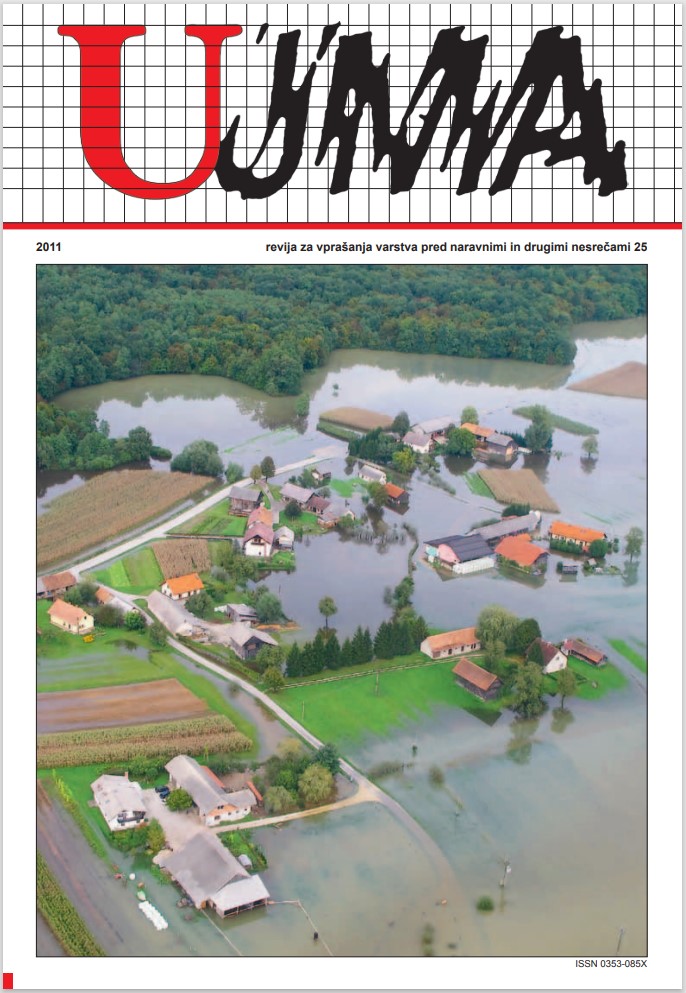ELEVATED MICROSEISMIC ACTIVITY DURING THE SEPTEMBER FLOODING
Abstract
During the floods in September 2010 that affected Slovenia, an increased seismic disturbance in the frequency range between 0.25 Hz and 1 Hz was observed on the seismic network of Slovenia. Because this phenomena coincided with floods it has been analysed in detail. The phenomena can be described as secondary macroseismic activity generated by the undulation of the Adriatic Sea in the Gulf of Trieste. The rolling was a result of the warm front. Such local secondary macroseismic activity can be a useful and a free-of-charge source of seismic signal for the analysis of seismic vulnerability of certain facilities despite being limited in time and frequency and spatially focused.
References
Dolenc, D., in Dreger, D., 2005. Microseisms observations in the Santa Clara Valley, California. Bulletin of the Seismological Society of America, 95, 1137– 1149.
Friedrich, A., Krüger, F., in Klinge, K., 1998. Ocean generated microseismic noise located with the Gräfenberg array. J. Seismol., 2, 47–64.
Longuet-Higgins, M. S., 1950. A Theory on the origin of microseisms. Philos. Trans. R. Soc. Lond. A. 243: 1–35.
Peterson, J., 1993. Observations and modelling of background seismic noise. Open-file report 93-322, U. S. Geological Survey, Albuquerque, New Mexico.
Planinšek, A., Agencija Republike Slovenije za okolje, osebna komunikacija, februar, 2011.
Rhie, J., Dreger, D., 2009. A simple method for simulating microseism H/V spectral ratio in 3D structure, Geosciences Journal,13, 401–406.
Zerva, A., 2009. Spatial Variation of Seismic Ground Motions, CRC Press.
Downloads
Published
Issue
Section
License

This work is licensed under a Creative Commons Attribution-NonCommercial-NoDerivatives 4.0 International License.
The articles are made available to the public under Creative Commons Attribution-NonCommercial-NoDerivatives 4.0 International (CC BY-NC-ND 4.0).


